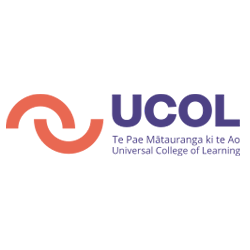
The effectiveness of simulation in preparing student nurses to competently measure blood pressure in the real-world environment
Status
Completed: 22 March 2010
Project Details
A project, completed in 2010, to evaluate the effectiveness of simulation in the teaching of clinical skills to Year One nursing students, using the clinical skill of blood pressure measurement as the focus for the research project. A collaboration of the School of Nursing, Universal College of Learning, New Zealand, and the Department of Nursing and Health Studies, University of Huddersfield, England.
Aims:
The main aims of the project were to:
- investigate simulation as a learning and teaching strategy for a variety of clinical skills
- review the effectiveness of the simulation training currently being used in two participating institutions.
Methodology:
The methodology used for the project involved:
- a review of literature to identify best practice
- a comparison of the teaching and learning approaches utilised by the two institutions
- surveying students as to the effectiveness of the simulation sessions before and after their first clinical placement
- surveying the clinical preceptors/mentors working with the students on the placement about their evaluation of student preparation and performance.
Team

Dr Marian Bland
Project Leader
Universal College of Learning (UCOL)Karen Ousey
University of Huddersfield, EnglandStatus
Funding
$8,883.00 (excl GST)
Key Findings
The key findings from the project included:
- The research demonstrated that simulation plays an important role in preparing students to competently measure blood pressure in real-world environments.
- The findings highlight the complexities of teaching blood pressure measurement. Both institutions used remarkably similar teaching approaches and resources, including the number of hours students spend in the clinical skills laboratory. The key difference was related to the timing of summative assessment of clinical skills competency – with UCOL conducting assessments prior to the student’s first clinical placement, compared with UH, who conducted their summative assessment after the student’s first clinical placement.
- Students in both institutions reported feeling some degree of confidence and competence in blood pressure measurement following the simulation sessions, although confidence levels were slightly higher at UCOL.
- UCOL students reported practising blood pressure measurement more often than their UH counterparts, although this may be due in part to the timing of the summative assessments.
- By the conclusion of their clinical placement, 99% of UCOL students and 100% of those at UH rated themselves as having a good understanding of the relationship between the theory and practice of blood pressure measurement and felt confident in applying that theory to practice.
- The nurses who worked alongside the students on their first clinical practice as mentors/preceptors considered that the majority of students (80% UCOL, 70% UH) were competent in blood pressure measurement.
- Surprisingly, considering the number of students they rated as being not yet competent, 75% of the UCOL and 96% of the UH mentors/preceptors considered the simulation sessions prepared the students effectively.
Key Recommendations
The key recommendations from the project were:
Questions raised | It does raise questions however as to what should be expected of first year student nurses in relation to this skill, what degree of competency is realistic and achievable. It also raises questions about the timing of summative clinical skills assessment, and whether this should be conducted before or after students have completed their first clinical placement.
Inclusion of simulated practice hours | The use of simulation is becoming more widespread in undergraduate nursing education. It is important to not only answer the questions raised by this research, but also consider the implications of including simulated practice hours in the total of accumulated clinical hours each student must accumulate prior to the completion of their programme.
Teaching and learning strategies | Further consideration should also be given to identifying teaching and learning strategies that could be adopted to help overcome the anxiety students experience in relation to performing blood pressure measurement.
A research report prepared by Marion Bland and Karen Ousey.
(PDF, 805 KB,39-pages).
- 15 March 2010